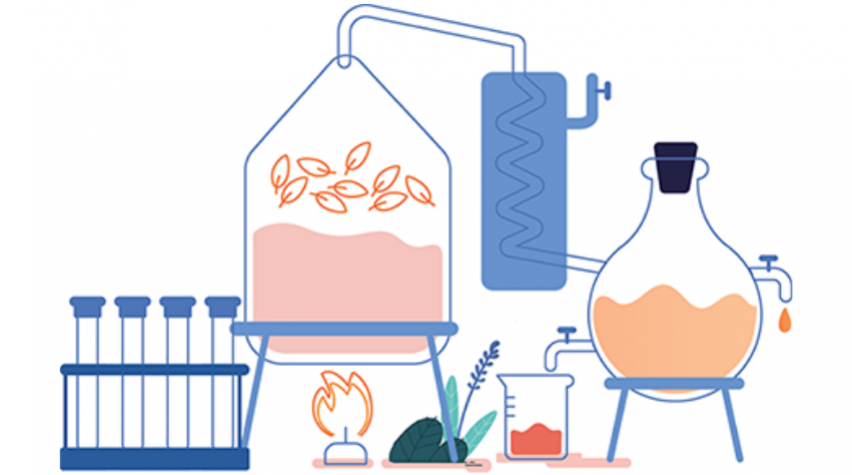
 Natacha Souto-Melgar, an assistant professor in the Dept. of Chemical Engineering at the Univ. of Arkansas (U of A), enjoys teaching and encouraging her students to be passionate about separations science.
Natacha Souto-Melgar, an assistant professor in the Dept. of Chemical Engineering at the Univ. of Arkansas (U of A), enjoys teaching and encouraging her students to be passionate about separations science.
“I like to motivate others,” she says.
“In teaching, there is power to inspire others and the opportunity to learn about different things.”
Educational grant makes project possible
Souto-Melgar recently received the AIChE Separations Division Education and Outreach Award, which grants up to $5,000 to support educational initiatives that drive learning in the field of separations.
With this grant, she plans to buy the equipment to develop a hands-on experiment through which students will learn to investigate molecular diffusion. She aims to design the experiment with a group of students who will create the experience, write a handout for its procedure, and record a video demonstration that all of the AIChE community can use in their courses.
“Most of our students go on to work in industry,” Souto-Melgar says. “Not a lot of them are pursuing post-graduate studies, and in chemical engineering, separations are one of the basic unit operations that students will see in industry. They need to know the basic concepts of diffusion, which is one of the ways separation is done. In addition, through our new experiment, our students will be able to apply basic concepts learned in the diffusion experiment to more complex problems, such as using a distillation column.”
Early chemical engineering experiences shape her style
Souto-Melgar prides herself on a unique teaching style developed during her years studying and teaching in Puerto Rico.
Her parents immigrated to Puerto Rico from Spain before she was born, and her father taught chemistry at the Univ. of Puerto Rico (UPR). Her mother was also a chemist, and her two brothers went on to pursue careers in chemistry and engineering as well. For Souto-Melgar, becoming a chemical engineer seemed like a natural step. She received her BS in chemistry from UPR and went on to pursue a PhD in chemical engineering at the same university. During this time, she worked with outreach programs to give scientific demonstrations at local public schools and conduct education workshops with local teachers.
After graduating with her PhD, Souto-Melgar spent three years teaching chemical engineering at UPR then worked at Pfizer for four years. At UPR, she learned two essential teaching methods: the open-ended approach and active learning techniques.
In an open-ended approach, professors give students equipment and a workspace, and the students have a chance to design experiments and analyze the data they collect. Instead of attending a laboratory class and following a manual, they get to fully explore their own questions.
In an active learning approach, rather than the instructor introducing a theory and solving problems, students are first presented with a problem and then work in teams to solve it. Finally, the professor discusses the solution with the class. That way, students are actively invested in the problem and the learning process.
Her classroom methods continue to evolve
In 2018, Souto-Melgar and her husband — who is also a chemical engineering professor — decided to move to the Univ. of Arkansas in search of better opportunities. There, she has had the opportunity to implement her teaching methods, such as active learning strategies, in the classroom. She also mentors students in lab courses where they design experiments instead of conducting pre-planned exercises.
“I had to adapt my way of teaching over the semesters,” says Souto-Melgar. “Throughout my teaching experience, I have noticed that new generations of students require different teaching strategies for effective learning. I have taken many workshops that focus on different teaching strategies that helped me improve my teaching.”
Overall, Souto-Melgar has greatly enjoyed teaching and learning at U of A. She has indeed used active learning, which is generally more suitable for chemical engineering courses, Souto-Melgar says. In one of her classes, which covers material and energy balances, students apply basic concepts of chemistry and math to problems. There, the active learning technique has been quite successful.
As each semester passes, she strives to make continuous improvements to her courses. Last year, she developed a novel experiment using a batch reactor. This year, with the AIChE award, she will incorporate a new experiment. Most of all, Souto-Melgar emphasizes the importance of separations and continuing to teach students its concepts. In the next five years, she would like to continue teaching and developing new laboratory experiences.
This profile originally appeared in the December 2020 issue of CEP. Members have access online to complete issues, including a vast, searchable archive of back-issues found at aiche.org/cep.


